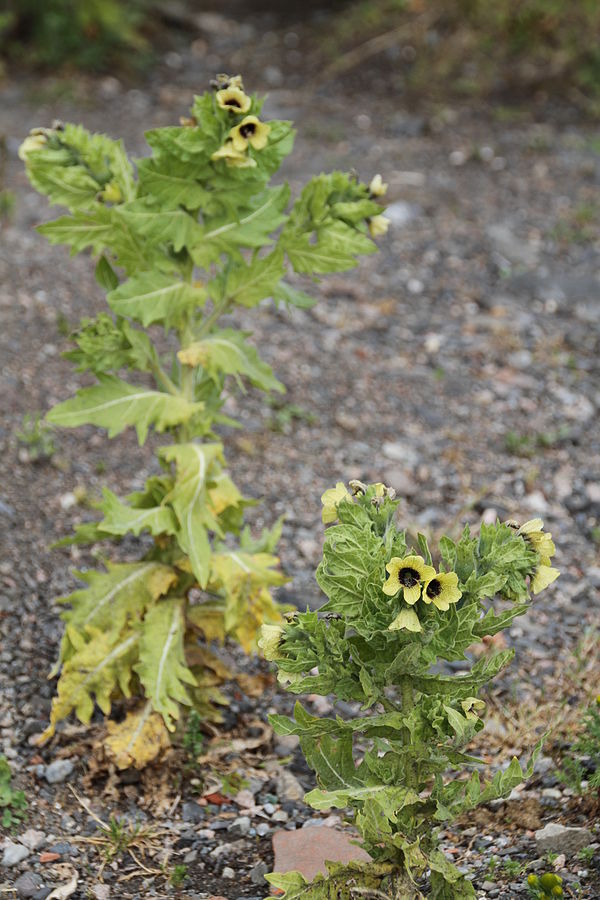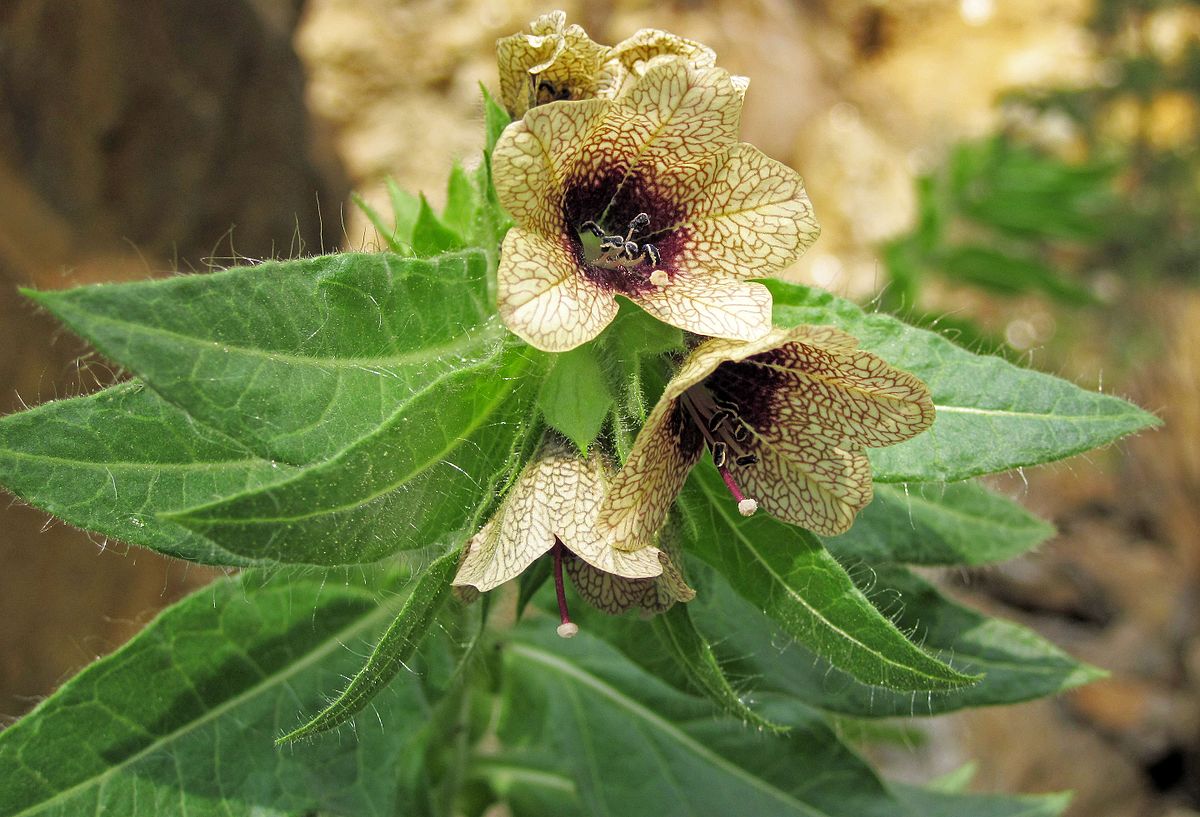Black Henbane

Black Henbane
(Hyoscyamus niger)
Priority: - Prevent / EDRR
Tags: Terrestrial | Toxic | EDRR
Identification and Reproduction
Identification:
- Black henbane is a biennial that forms from a rosette its first year of growth.
- It is entrely covered in sticky, greasy hairs.
- This plant grows from a fleshy taproot and a semi-woody stem. It grows upright and can reach up to one metre tall.
- Leaves are large, extending up to 15 cm wide and over 20 cm long. They are arranged alternately on the stem and are shallowly lobed.
- It produces flowers that are pale yellow with veins and centre that are deep purple. Flowers are funnel-shaped, 5-lobed and extend from spike-like capsules.
Reproduction:
- Only reproduces by seed.
- A single plant can produce up to half a million seeds in one growing season.
- Seeds can remain viable for 4 years.
- Seeds are easily dispersed by wind or movement of soil or gravel.
Habitat & Ecology
- This plant is very adaptable and can thrive in a wide range of soil textures and pH levels.
- It is shade intolerant.
- The most aggressive on disturbed and cultivated sites.
- Currently it is found in BC in Cariboo, Okanagan-Similkameen, Thompson-Nicola and East Kootenay.
Impacts
Social:
- All parts of the plant are poisonous to humans and animals when ingested. The plant contains toxic alkaloids. Poisoning can cause impaired vision, convulsions, coma and can result in heart or respiratory failure.
- Can contaminate seed crops.
- Black henbane is a competitor to several crops; wheat, millet and cotton.
Management
Prevention is a high priority for this plant.
- Black henbane is not a strong competitor. To prevent establishment and spread be sure to maintain healthy vegetation cover.
- Although this plant is still valued for its medicinal uses, refrain from planting and distributing.
- If you identify this plant, please report it to provincial government.
Resources
Download the Government of BC Invasive Species Alert for Black Henbane here.
For more details check out the Invasive Species Compendium datasheet on Hyoscyamus niger (black henbane).
Header photo (Matt Lavin).




